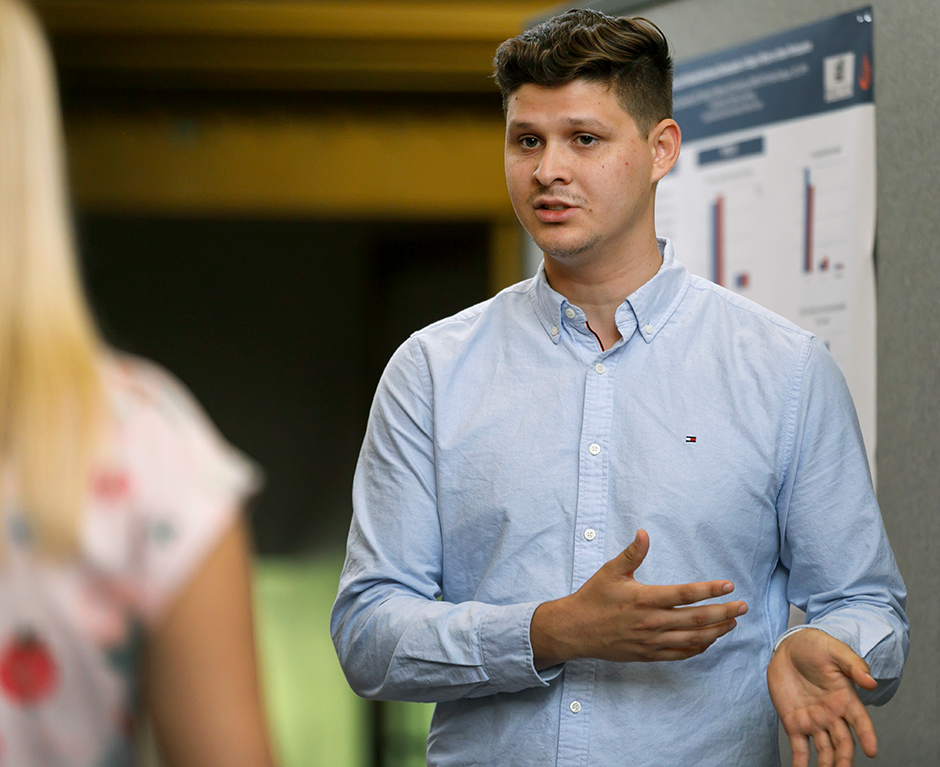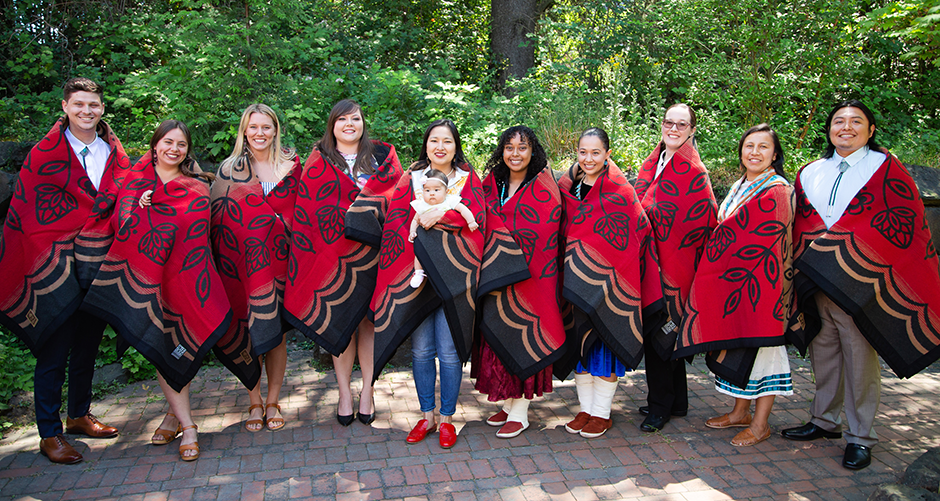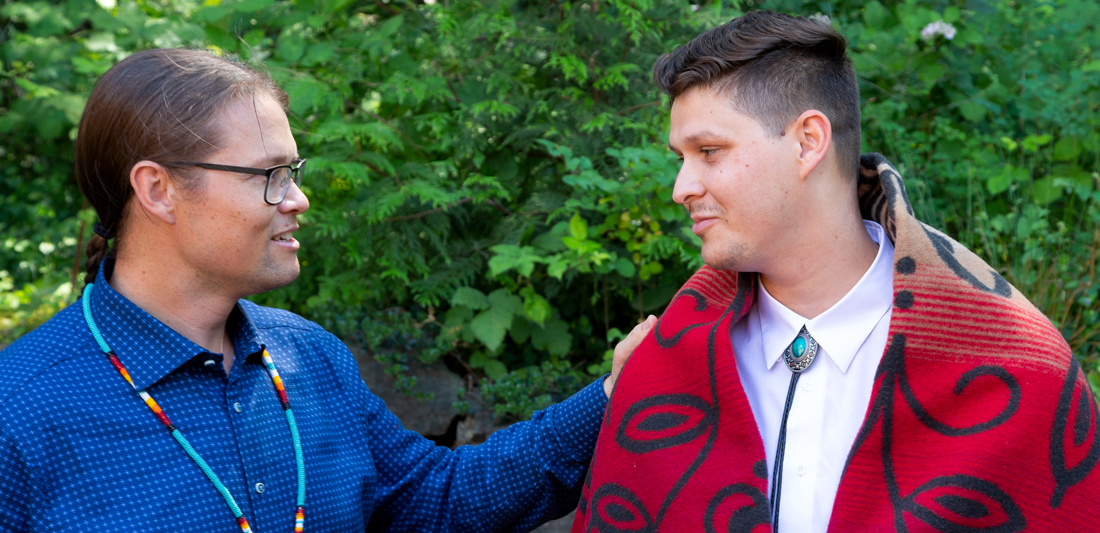Ever since the age of six, Jacob Smith remembers wanting to be a doctor. Growing up with an autoimmune disorder, Jacob was in and out of OHSU Doernbecher Children’s Hospital as a child.
Because of his different health conditions, Jacob would miss 30 days of school each year. He had to see his pediatrician and specialists at Doernbecher often and began to feel comfortable in the health care setting.
“I’ve always had a strong connection to OHSU and Doernbecher,” he said. “It was my dream to learn how to practice medicine at OHSU.”
Jacob is now a second-year student at the OHSU School of Medicine, achieving one dream and preparing for the next.
Developing a connection
Both of Jacob’s great-grandparents were born on Oregon reservations in Umatilla and Grande Ronde. He grew up going to powwows, but as he started competitive soccer, his weekends became consumed with athletic endeavors and he lost touch with his Native culture.
When Jacob graduated from Linfield College, he applied to medical schools all over the world, but always had his eye on attending OHSU — though his MCAT score was one point shy of OHSU’s minimum requirement.
No other school felt like the right fit.
Then, he discovered the Wy’east Pathway, a program housed within the Northwest Native American Center of Excellence (NNACoE) at OHSU. The program is designed as a post-baccalaureate pathway for American Indian and Alaska Native students to prepare them for successful application to medical school and to excel as medical students and physicians.
Jacob applied and was accepted into the pathway program.

Wy’east Pathway
Tribal people are underrepresented in health care professions. And many American Indian and Alaska Native people are unduly burdened with health challenges, including higher-than-average rates of chronic disease and shorter-than-average life spans.
Forty-three percent of medical schools don’t have one American Indian or Alaska Native student. The NNACoE strives to address the health care needs of all people by increasing Native American representation in the U.S. health professions workforce.
The program prepares students for the academic rigor of medical school through science foundation courses and professional preparation. Each year, about 10 students are accepted into the program. Students who meet academic standards and demonstrate professionalism in all aspects of the program are provided conditional acceptance into the OHSU School of Medicine.
“I’ve had my doubts, just as anyone would, about being good enough to be in medical school. I’ve learned I have what it takes.”
“I was never surrounded by other Native American students until I entered the Wy’east program,” Jacob said. “I didn’t grow up on the reservation, but I learned that being Native is more than that — and this program brought me closer to my culture again.”
The Wy’east Pathway program provides culturally relevant learning for its students. They host workshops with Native American physicians to talk about the work they’ve done in their home communities. Students participate in beading and moccasin-making workshops. They also take part in community health service with Oregon tribes, gaining a greater understanding of tribal and rural health issues.
Jacob served rural communities through the OHSU Casey Eye Institute and its community outreach mobile clinic. The Casey Community Outreach Program offers free, on-site vision screenings for underserved communities across Oregon which might not have optometrists or ophthalmologists. His work with the Casey Eye Institute motivated Jacob to work with rural communities, specifically native communities, as a future physician.
“The experience has opened my eyes as to why I want to be a physician and help those who don’t have access to care.”
“Getting to work with physicians on Native reservations, the Casey Eye Institute and Native communities made me develop a closer tie to my native heritage,” he said. “The experience has opened my eyes as to why I want to be a physician and help those who don’t have access to care.”
The Wy’east Pathway program also boosted Jacob’s MCAT score: His conditional acceptance at OHSU turned into an official one.
“I’ve had my doubts, just as anyone would, about being good enough to be in medical school,” he said. “I’ve learned I have what it takes.”

Upon completion of the pathway, students participate in a celebratory blanket ceremony. Wool blankets are placed on the scholars’ backs to symbolize the resources and shelter for protecting themselves and their loved ones.
“The blanket ceremony was stunning,” he said. “It was one of the best days of my life. I loved being around other natives who have come a long way from where they were to be where they are now and having the support from all of the faculty at OHSU.
“If you would have told me five years ago that I would be in medical school — and doing well — I wouldn’t have believed you,” he said. “Each day I’m at OHSU, I’m inspired to dream bigger.”

